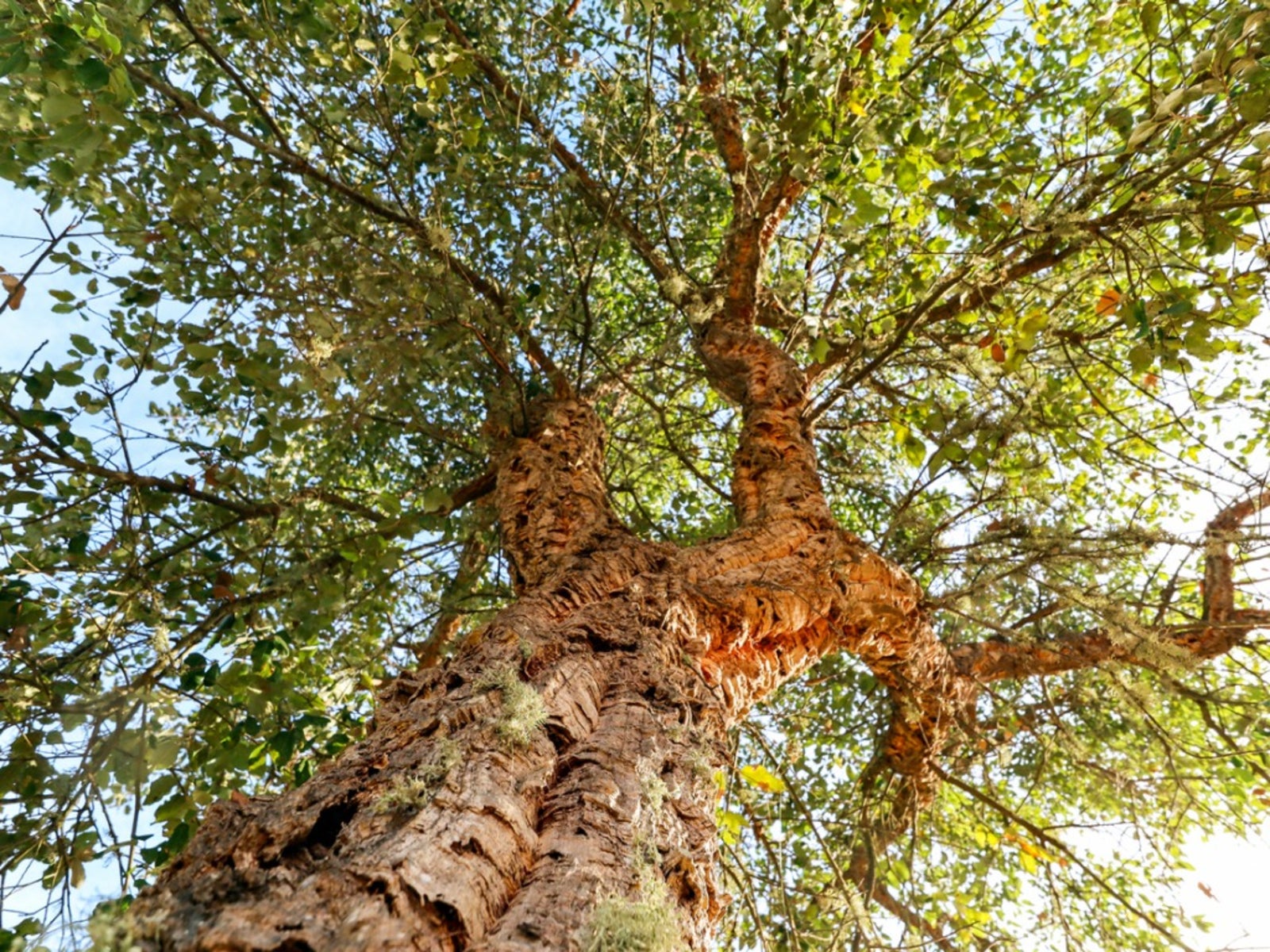Cork Oak Information – Learn About Cork Oak Trees In The Landscape


Have you ever wondered what corks are made of? They are often made from the bark of cork oak trees, hence the name. The thick bark is stripped off the living trees of this unique oak species, and the trees regrow a new layer of bark. For more cork oak information, including tips about growing a cork oak tree, read on.
Cork Oaks in the Landscape
Cork oak trees (Quercus suber) are native to the western Mediterranean region and are still cultivated there for their bark. These trees are slow-growing giants, eventually maturing to 70 feet (21 m.) or taller and equally wide. Woody and upright, cork oaks in the landscape have small, rounded leaves that are gray underneath. According to cork tree information, the leaves stay on the branches all winter long, then fall in spring as the new leaves appear. Cork oak trees produce small acorns that are edible. They also grow the fascinating corky bark for which they are cultivated commercially.
Cork Tree Cultivation
If you want to cork oaks around your home, it may be possible to grow these trees. Cork oak cultivation is possible in U.S. Department of Agriculture plant hardiness zones 8 through 10. So, if you are interested in growing a cork oak tree, you’ll need to find a site with full sun and good drainage. The soil should be acidic, since the tree’s leaves yellow in alkaline soil. You can grow cork oak trees by planting acorns if you can’t find a seedling plant. Young cork oak trees grow slowly and require regular irrigation. As the trees mature, they become drought tolerant. Still, even mature trees need a few good soakings per month over the course of the growing season. These make excellent shade trees, as their canopies, full of small leaves, offer moderate to dense shade. Likewise, healthy trees are easy maintenance. You don’t need to prune them unless you want to elevate the base of the canopy.
Gardening tips, videos, info and more delivered right to your inbox!
Sign up for the Gardening Know How newsletter today and receive a free copy of our e-book "How to Grow Delicious Tomatoes".

Teo Spengler is a master gardener and a docent at the San Francisco Botanical Garden, where she hosts public tours. She has studied horticulture and written about nature, trees, plants, and gardening for more than two decades. Her extended family includes some 30 houseplants and hundreds of outdoor plants, including 250 trees, which are her main passion. Spengler currently splits her life between San Francisco and the French Basque Country, though she was raised in Alaska, giving her experience of gardening in a range of climates.
-
 Try The Trend – Turn Any Bed Into A Keyhole Garden With This Clever In-Ground Composter
Try The Trend – Turn Any Bed Into A Keyhole Garden With This Clever In-Ground ComposterKeyhole gardening is an efficient and sustainable practice that saves space. Get started on this DIY project quickly and easily with an in-ground composter.
By Bonnie L. Grant
-
 4 Superfast Composting Methods: Turn Waste Into Garden Gold In 30 Days Or Less
4 Superfast Composting Methods: Turn Waste Into Garden Gold In 30 Days Or LessTry the fastest composting methods to turbocharge your pile and transform kitchen scraps and garden waste into finished compost in just a few weeks.
By Mary Ellen Ellis